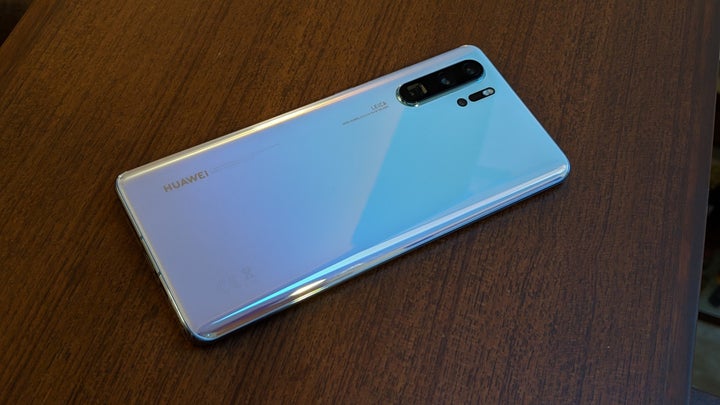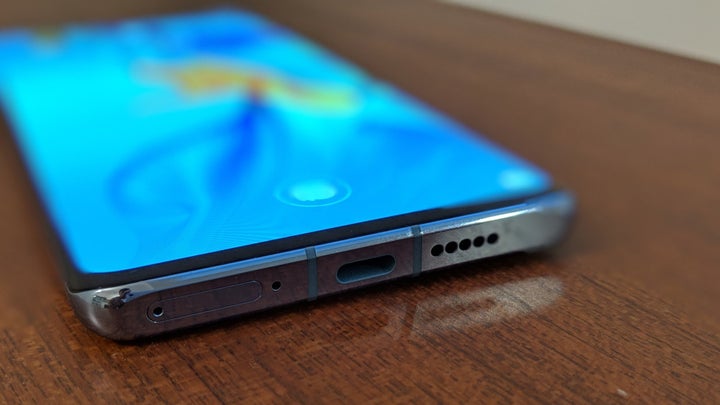Huawei’s truly got its mojo back. After releasing the highly acclaimed Huawei Mate 20 Pro with its stellar camera, the folks at Huawei have done one better with the Huawei P30 Pro. With its all-seeing and immensely versatile camera setup, a battery that refuses to give up and a design that’s slick enough to stand out, the Huawei P30 Pro is a fantastic flagship that stacks up well against the Samsung S10 series and makes a strong play for your wallet.
If you’re all about mobile photography, the Google Pixel used to be the undisputed champ, but the Huawei P30 Pro changes that and wrests the mobile photography crown, at least for the time being.
The Huawei P30 Pro is available on Amazon starting 15th April and is priced at Rs. 71,990 for the 8GB/ 256GB Breathing Crystal (pearlescent blueish-white, pictured above in the sunset) and Aurora (blue) colorways, with early bird consumers getting a Huawei Watch GT for Rs 2,000 if bought as a bundle. Read on for the detailed pros and cons, but if you’re a camera enthusiast with a big budget — this is the phone to buy right now.
P30 Pro Pros
Cameras: How is Huawei’s take on the quad-rear-camera setup any different? Let’s start with that insane periscope-like telephoto lens setup, which channels light through the series of lenses inside the body, a setup that would otherwise be impossible to fit in, depth-wise, into a smartphone frame. The result? True 5x optical zoom which, when combined with the main 40MP image sensor, allows Huawei to produce a hybrid 10x zoom that the company claims is lossless (spoiler alert: it isn’t completely, but the detail levels are impressive and the loss in quality and sharpness is negligible).
Take a look at what the zoom setup can manage, more so when you take it all the way to the insane 50x digital zoom a.k.a creep mode. At full stretch, it’s just about usable in good light, and there’s nothing in the market that can compete against this at the moment. Jaw, meet floor – these are images from a smartphone!
Yet, the zoom capabilities are just one half of the camera story. Courtesy the new RYYB sensor (as opposed to the traditional RGB setup), Huawei claims it can collect 40% more light which helps in detail capture, more so in low light.
Not idle claims these – the P30 Pro has, put simply, the best low-light camera in a smartphone, besting even the auto-magical Night Sight on the Pixel. This is just the auto mode, and there’s a dedicated Night Mode and a Pro mode if you feel the need to tweak the shots further.
Bear in mind, while the telephoto camera has optical stabilization, the disappointing f/3.4 aperture (vs f/1.6 on the main sensor) makes the zoom sensor fairly ineffective, so much so that the camera app completely switches to digital zoom even if there’s a mild drop in ambient light.
Rounding out the diversity of shooting options is the 32MP front camera and the 20MP ultra-wide-angle shooter, the latter enabling those all-encompassing landscape shots and a surprisingly good super macro mode. The last “camera”, a Time of Flight or depth sensor, helps in focusing in low light and separating the subject from background objects for portrait photos that throw up delightfully dreamy bokeh more often than not, though the edge detection could definitely be improved.
Pitted against its chief rival, the Pixel still eked out more detail in well-lit shots while the Huawei P30 Pro edged ahead with the low-light and zoom shots. Overall, images taken with the Huawei P30 Pro are crisp, offer good dynamic range and accurate white balance, and turn out colors that are pleasant, without going completely overboard.
It’s not perfect – you still get some color inconsistencies when switching between different cameras and video quality doesn’t compare well against the iPhone/ Samsung Galaxy S10 – but when it comes to stills, the Huawei P30 Pro excels where most stumble and blazes a new trail for mobile photography. Refreshing to see strides being made by a company other than Google, Samsung or Apple.
Design: If you’ve used the Huawei Mate 20 Pro, you’ll know what the Huawei P30 Pro broadly feels like in the hand, although the latter is a hair bigger. Yet the design is anything but old, and while the Aurora blue is still a stunner, the ‘Breathing Crystal’ finish white-to-blue pearlescent finish is strikingly different and rewards you if you take the risk of using it without a case.

No hole-punch cutout here - Huawei’s stuck around for this round with a small dewdrop notch a la the OnePlus 6T, which means you only get the single selfie camera, with no laser-based face unlock as on the Huawei Mate 20 Pro, making it easier to spoof and slower in low-light face unlocks. Biometric authentication is via the in-screen fingerprint scanner, an optical variant which is reasonably quick and accurate as long as you consciously press your fingerprint firmly on the screen, it works.
Also missing is the conventional earpiece speaker, which is now present under the screen and uses a bunch of magnets to create vibrations on the screen to project audio into your ear. Voice calls are loud and clear, oftentimes a bit too loud if you push the volume way up.
The downside? There’s only one bottom-edge speaker, so no stereo separation. No headphone jack either, which is odd given that the smaller Huawei P30 includes one, but at least they’ve retained the infrared module.
Performance and Battery: Coming in mid-cycle for the company’s launches, the Huawei P30 Pro has the same flagship Kirin 980 chip as the Huawei Mate 20 Pro, with 8GB of memory and 256GB of storage.
There’s a new file system that gives the phone a boost while transferring files and launching apps, but there’s nothing new here, grunt wise, over the Mate 20 Pro – it’s fast and smooth for everyday use, knuckle gestures shortcuts execute without any lag and gaming benefits with the GPU Turbo 3.0 performance boosts – pretty much in line with what you’d expect a phone priced at this point to be, although I expect the Kirin 980 to be overrun with the new bunch of Snapdragon 855 smartphones that are just around the corner.

After the camera, the 4200mAh battery is the other star of the show, fast charging at up to 40W (zero to full in just a bit over an hour) using the included charger and lasting nearly two days of the usual — Internet browsing, WhatsApp, watching YouTube and some Asphalt 9 – the phone is the Duracell bunny of flagships. The now-familiar party trick that the Huawei Mate 20 Pro first introduced – reverse wireless charging – is present as well.
Huawei P30 Pro Cons
Display: For all of its bleeding edge hardware, Huawei seems to have played it a little too safe with the display. The 2340x1080 pixels resolution on the 6.47-inch panel is a lot lower than its peers, but with most of those same peers shipping with a lower resolution selected by default in the box, you’re unlikely to tell the difference unless you’re pixel peeping.
It helps with the Huawei P30 Pro’s battery life as well and it’s not a bad display per se… plus it’s tuned to the DCI-P3 color gamut (with HDR support). It’s just that while one should be happy with a rich, color accurate display… at this price, a higher resolution panel is about par for the course.
EMUI: For the most part, Android 9.0 based EMUI 9.1 addresses the usability concerns that plagued Huawei’s software for the past several generations but it’s still a tad dated and looks rough around the edges, more so when you compare it to the cleaned up OneUI on Samsung’s flagships. Install a third-party launcher and you should be fine.